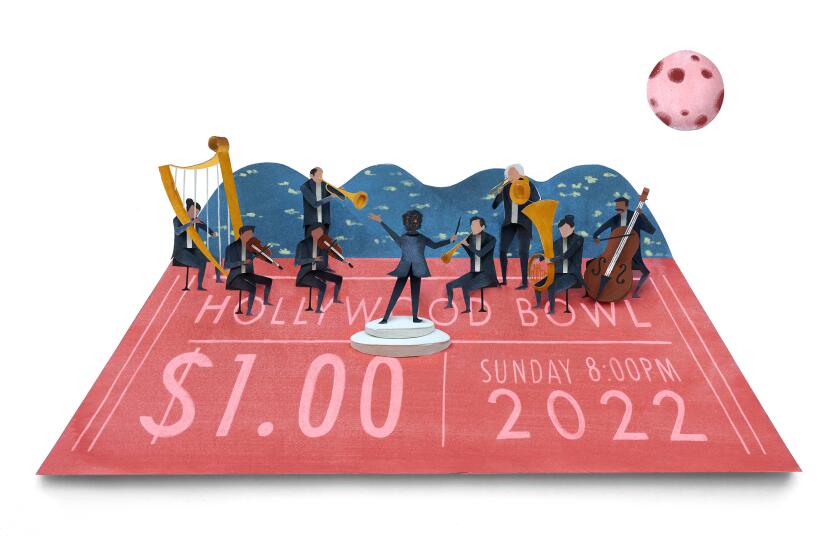One of the best walks you can take in L.A. is in a spot you already love
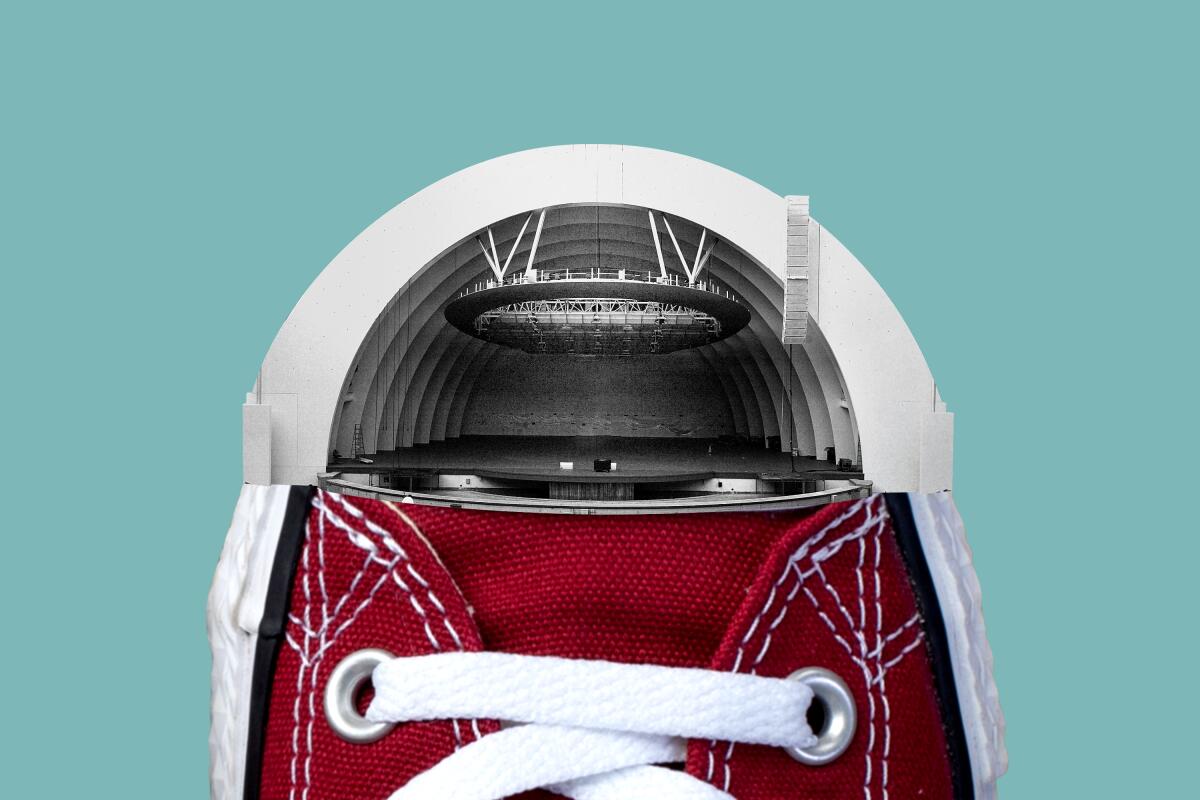
- Share via
The Hollywood Bowl celebrates its 100th anniversary this year. While you probably know and love the iconic landmark for its concerts under the stars, $1 L.A. Phil tickets (which are being offered again this season) and BYOB-and-wine policy, you might not realize it’s also a fantastic public park that you can enjoy during the day.
Owned and operated by the Los Angeles County Department of Parks and Recreation, the 88-acre site is filled with pathways to art, music history, native plants and wildlife, and stunning views of the city. Ready to experience the Bowl in a whole new way? Put on your walking shoes and follow this guide to the gems throughout the grounds that people often miss while rocking out at the shows.
Who needs expensive box seats at the Hollywood Bowl when you’re falling in love?
1. Admire the “Muse.”
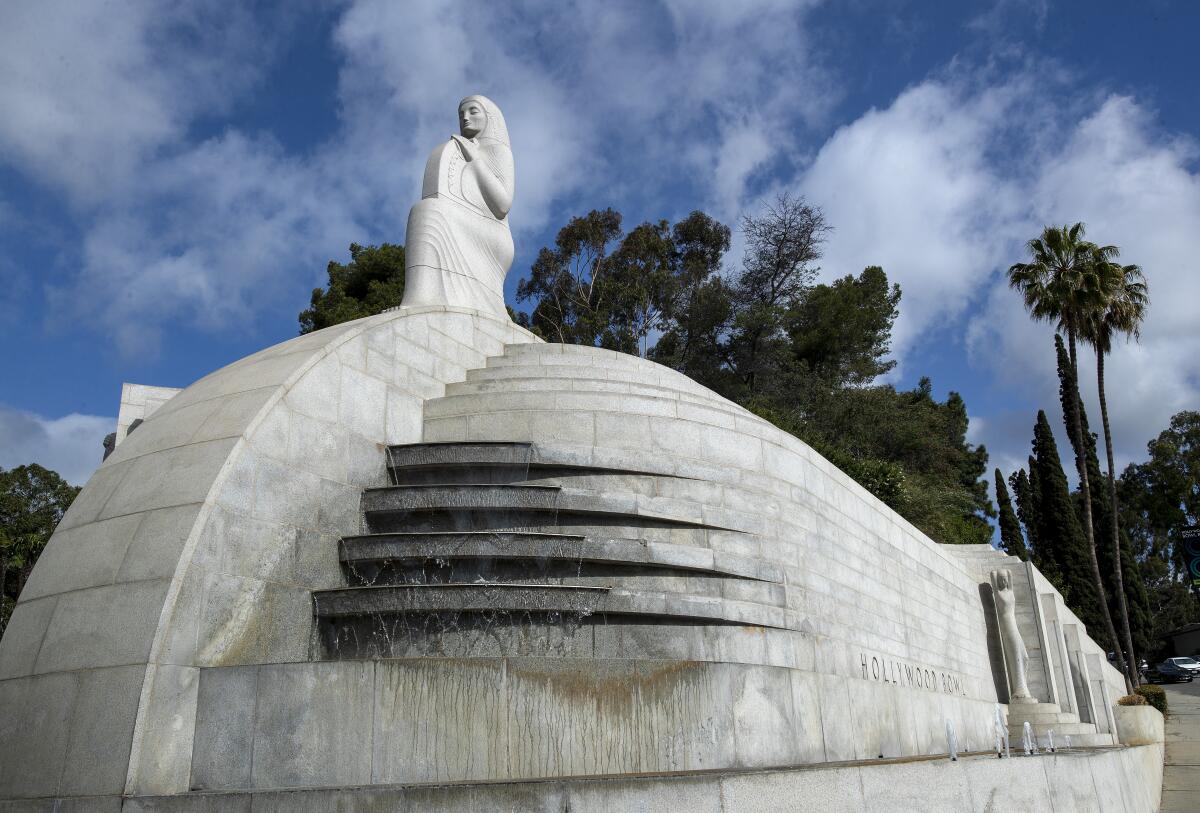
Even if you’ve never been to a concert at the Bowl (or if it’s been a while), you’ve almost certainly driven along the 101 and seen the “Muse of Music, Dance, Drama,” the grand, Art Deco-style sculpture that stands at the entrance to the site.
Two hundred feet long, 22 feet high and carved from 300 tons of granite, the work was designed by sculptor George Maitland Stanley, who gave Hollywood another famous figure: the Oscar statuette. The sculpture and the tiered, 1,180-ton concrete fountain it stands on were unveiled in 1940 as part of the Depression-era Public Works of Art Project and cost $100,000.
2. Meet some critters.
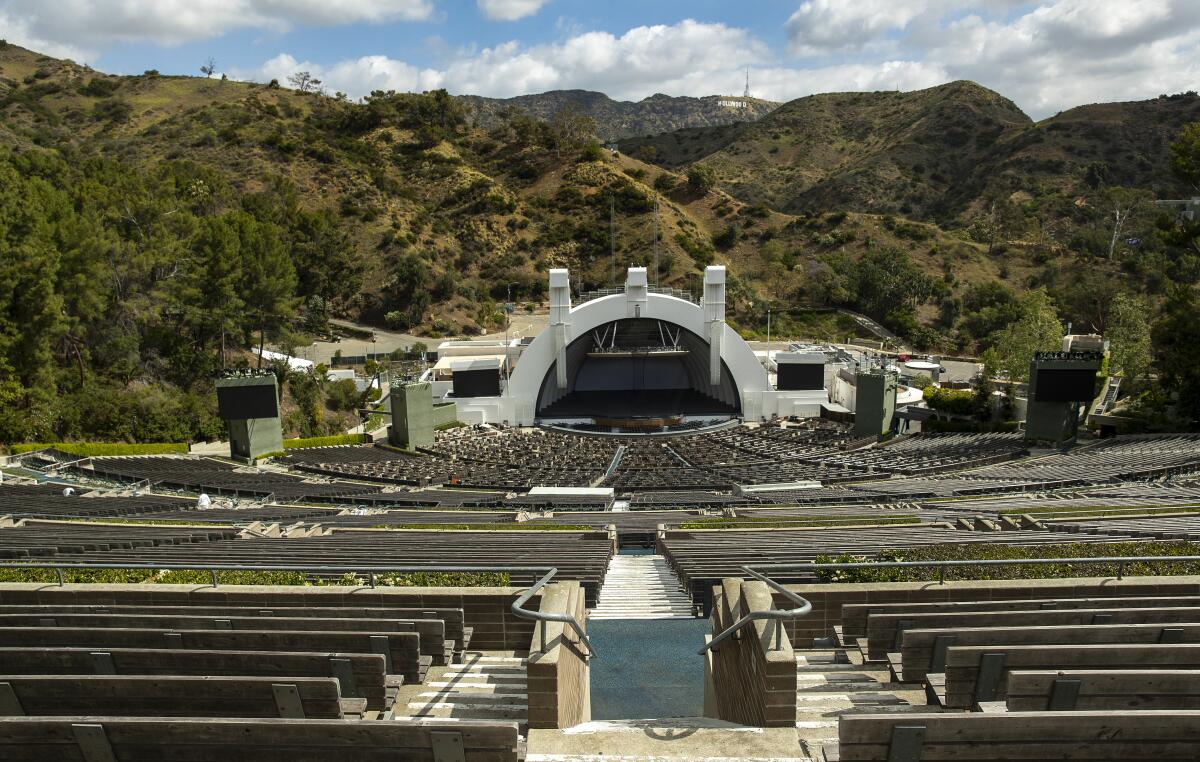
People sometimes forget that the Bowl is in the wild. Dozens of species live in and around the natural amphitheater — on a recent walk, I saw red-tailed hawks gliding overhead, yellow butterflies flapping their wings and lizards sunning themselves.
Paul Geller, a longtime director of production at the Bowl, once told me that during a concert, a family of six raccoons hung on the arches of the shell (presumably, they were music lovers). Another time, in the middle of a performance, a fox walked onstage and sat behind a pianist. Before shows begin, you might see bats flit around or hear coyotes howling. And at the end of an evening, it’s not uncommon for deer to emerge from the trees and snaffle up the leftover popcorn.
3. See (and smell) an original pepper tree.
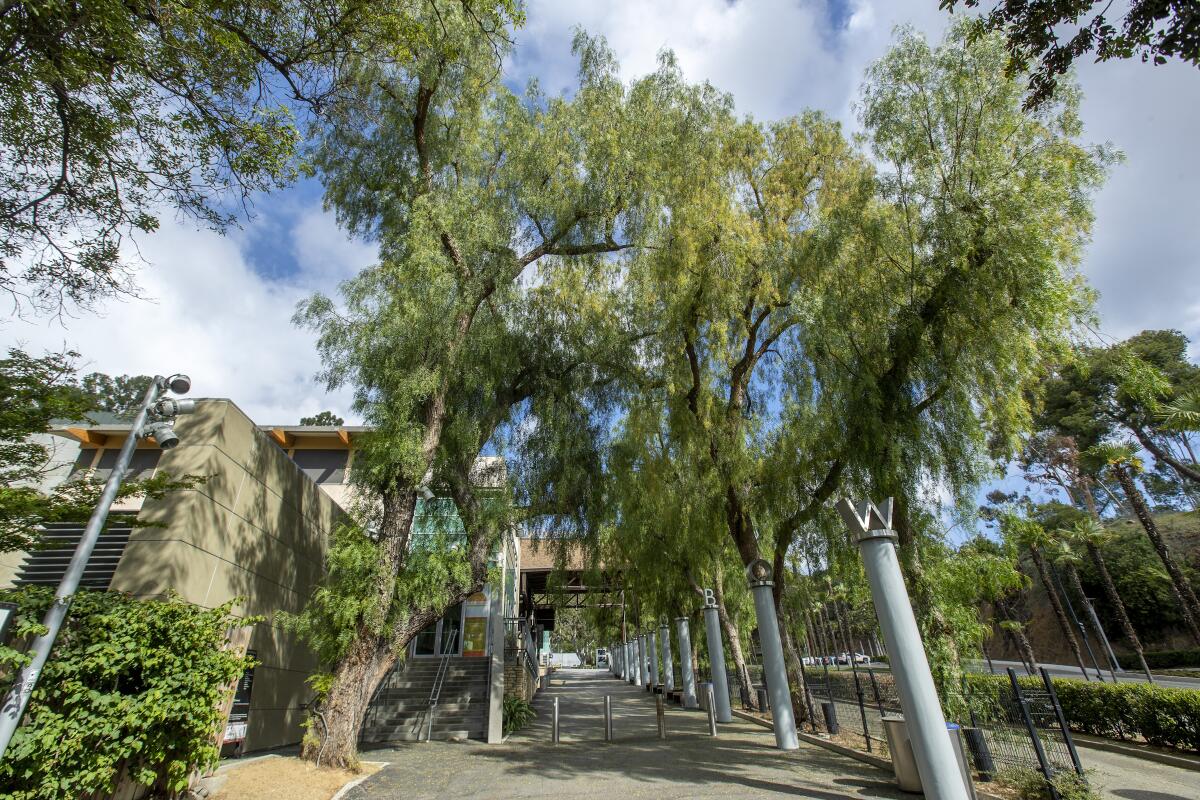
Here’s a fun fact: Peppertree Lane, which takes you from Highland Avenue to the entrance of the venue, was named after the trees that lined the walkway in the Bowl’s earliest days. Only one of those original pepper trees remains, and it’s located near the doors of the Hollywood Bowl Museum, which, by the way, is absolutely worth a visit if you’re interested in the Bowl’s rich history. (Did you know that the Bowl got its start as a natural canyon amphitheater known as Daisy Dell?)
4. Look for treasure.
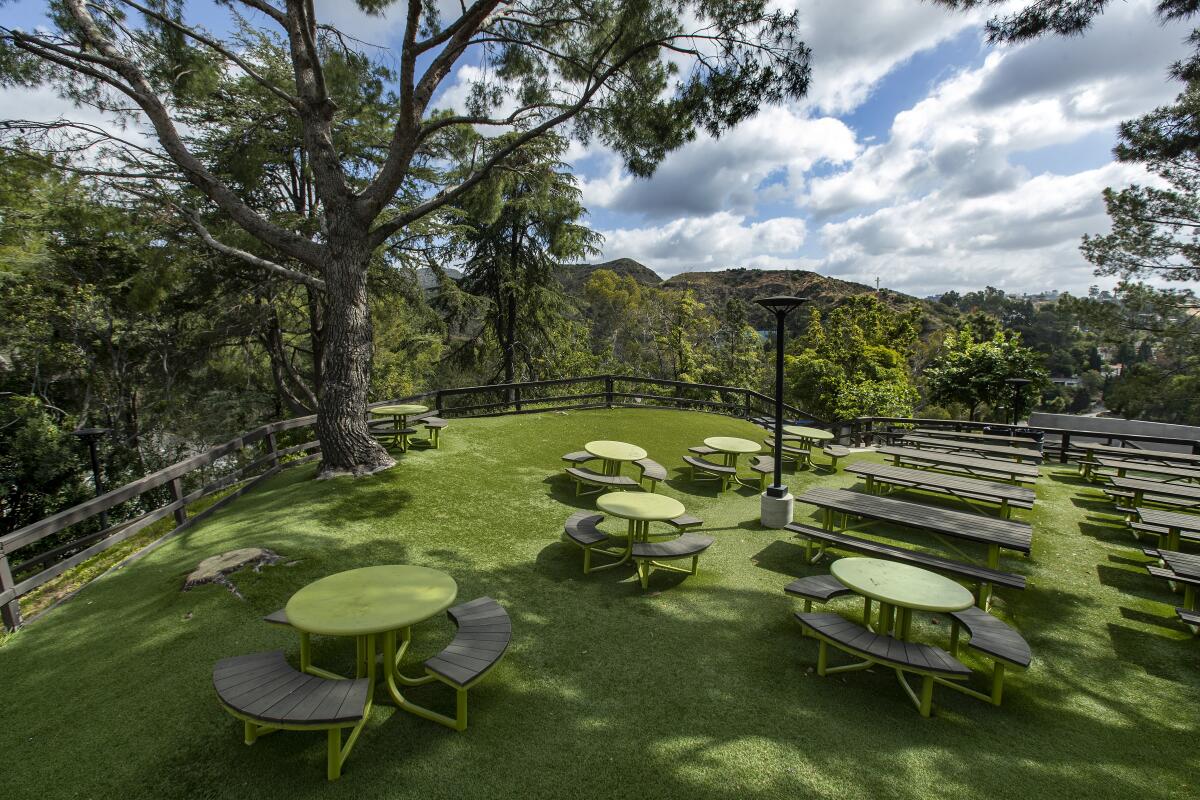
If the main gate is open, work your way upward to picnic area No. 7, which is at the summit of a winding hill but worth the climb for the views of Hollywood and far beyond. Concert or not, binoculars are essential, as from here, you can look for unusual sparkles in the Cahuenga Pass.
As the story goes, buried somewhere nearby is a fortune in diamonds, pearls, gold and silver. It was stashed away in 1864 by Diego Moreno, a shepherd who saw agents of Mexico hiding the loot after fleeing San Francisco, where they had planned to buy weapons to aid the war against the French. Moreno dug up the packages and ran, but shaken by a nightmare, he buried them in the Pass on the way back to Mexico. After that, he died, the first of several deaths associated with the “curse” of Cahuenga Pass.
5. Get cozy in the seats.
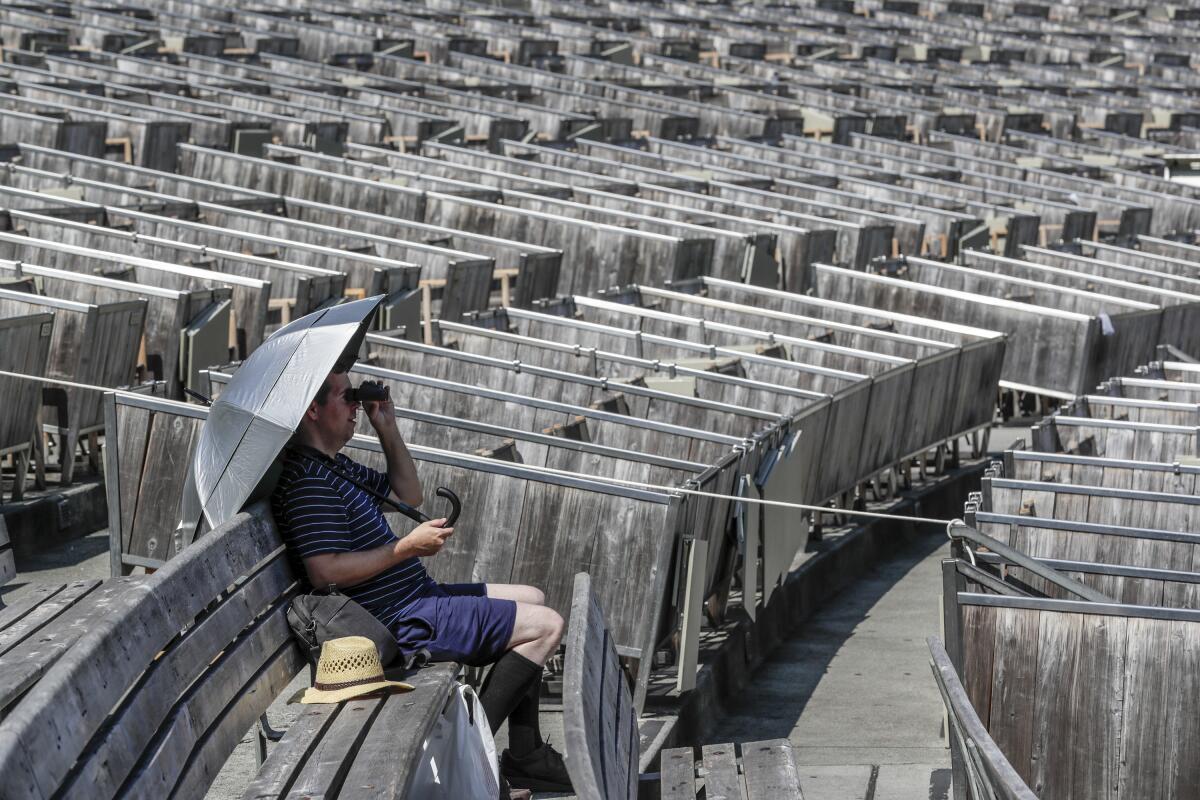
During the season, which this year runs from June to the end of September, it is possible for locals and in-the-know tourists to watch the Los Angeles Philharmonic’s morning rehearsals, sometimes even with maestro Gustavo Dudamel wielding the conductor’s baton. (For the latest information, email [email protected] or call (323) 850-2000. Seating is limited to the side benches in Section D.)
Walking the 168 steps to the back of the amphitheater is a must. In 2011, The Times reported that British actor and comedian Eddie Izzard, a keen marathon runner, ran to the top in under five minutes as security guards trailed in his wake. He jokingly fell to his knees once he was back onstage and advised the crowd against following his lead.
The Bowl has just under 17,500 seats, many of them offering amazing views of the Hollywood sign on Mt. Lee. Sections Q3 and U3’s row 9 are the only two-seater benches — popular options for couples.
6. Check out some rare plants.
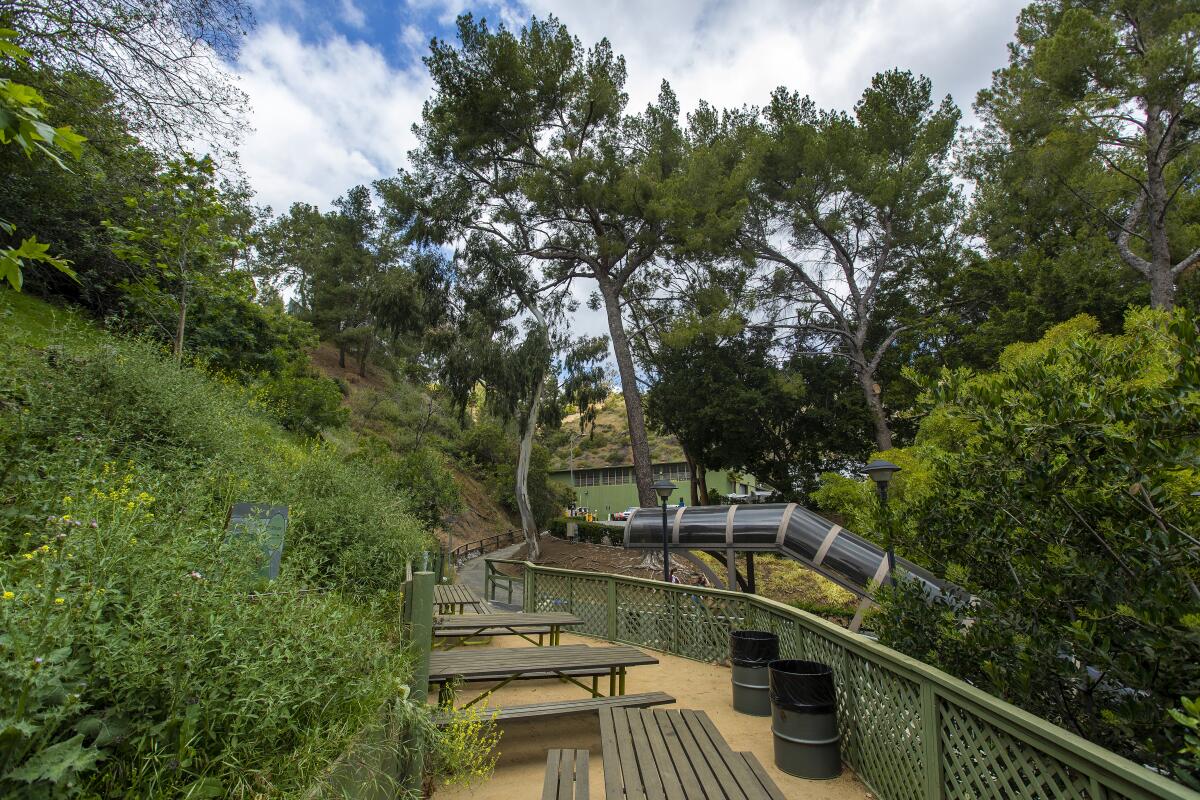
Despite having an escalator and a set of angled concrete steps leading up to it, the tiny Toyon Terrace isn’t one of the Bowl’s official picnic areas, which makes it a rather hidden gem.
Located north of the stage, it only has a few tables, but there’s an interesting historical marker under a small, raggedy-looking tree. It notes that the Heteromeles arbutifolia, or toyon California holly tree, is native to these hillsides and that “Hollywood was named for this plant.” (The story that Hollywood was named after the shrub has been contested, however.)
There are native and nonnative plants all around the Bowl, but this area in particular is home to Plummer’s mariposa lily, a rare plant. There are also Southern California black walnuts, native trees found in the Los Angeles Basin and surrounding hills.
7. Stop for a picnic in the park.
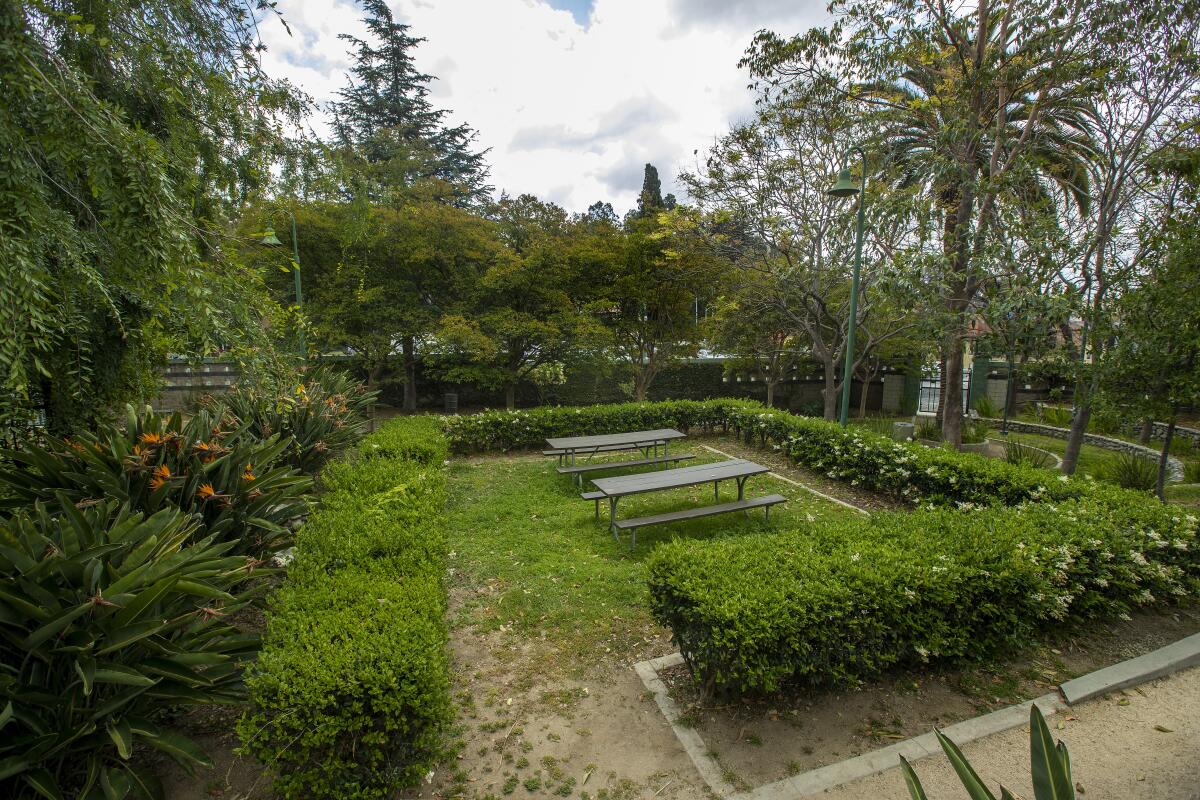
After getting in some stair work around the picnic areas, rest your legs across the street at Highland Camrose Park. Part of the Bowl, it’s a quiet, walled area with palm trees and plenty of tables. Now offices for the Sheriff’s Department and the L.A. Phil, the park’s historic Craftsman bungalows were once part of a residential village that housed movie stars and singers.
8. Marvel at the shell from every angle.

From almost everywhere in the park, you can see the Bowl’s shell, an enduring cultural icon. Since 1926, there have been five versions of it, the first three only lasting a year each as engineers and architects tried to work out the best shape to reach audiences’ ears. The 1929 incarnation ended up on the Los Angeles County seal, and was “temporary” for 75 years, until it was fully replaced in 2004. A Times story reported that while some preservationists fought against the current shell, musicians were delighted when it made its debut. Said L.A. Phil trumpeter Boyde Hood, “When I played the first note, I thought, ‘Boy, this is nice.’”
More to Read
Sign up for The Wild
We’ll help you find the best places to hike, bike and run, as well as the perfect silent spots for meditation and yoga.
You may occasionally receive promotional content from the Los Angeles Times.
